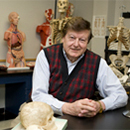Page 14 • (987 results in 0.022 seconds)
-
working everyday to make this planet a more cohesive, balanced, diverse and loved place. A Coalescing Interpretation of Biology and Storytelling On the Relationship Between: Two Ocean Megafauna, People and Plastic.This paper interprets the environmental problem of plastics in the ocean through the lens of environmental biology and storytelling. It addresses the biological explanation of plastic threats to biodiversity and consequent functionality of ecosystems by examining S.T. Coleridge’s The Rime
-
2022 Mathematics Capstone SymposiumFriday, May 6th Join the Mathematics Department in Morken 216 to hear the senior capstone presentations. If you’d like to watch the presentations virtually, please email Dr. Daniel Heath (heathdj@plu.edu) for the Zoom link. 12:30pm Hannah Tate An introduction to climate science, emphasizing the significance of mathematical modeling in communicating climate data and engaging a wide audience in the fight against the climate crisis. 1:00pm Drake Nguyen We will
-
Studies Analytical Reasoning (4 semester hours) ECON 101: Principles of Microeconomics ECON 102: Principles of Macroeconomics MATH 107: Mathematical Explorations (or higher level mathematics course) Math placement or High School Math will not be accepted as a substitute Ethics (4 semester hours) HIST 248: Innovation, Ethics, and Society PHIL 125: Ethics & the Good Life PHIL 128: Politics & the Good Society PHIL 229: Human Rights RELI 226: Christian Ethics Communication (4 semester hours) COMA 212
-
General Resources All That Jas: Journal Abbreviation Sources Hypermedia Glossary of Genetic Terms UCMP Glossary Seminar Videos Career Panel 3.15.2013 Anatomy & Physiology A Pediatric Nurse’s Guide to the Human Body Botany The Arabidopsis Information Resource University of Connecticut Greenhouses University of Washington Medicinal Herb Garden Cell and Molecular Biology Biodic: The Ultrastructures Website Cell and Molecular Biology Online GenBank Conservation Biology The Society for Conservation
-
Angelia Alexander Professor Emeritus of Biology Full Profile 253-535-7475 alexanag@plu.edu
-
one uses what one learns in order to think through particular issues or problems). Some recent assignments include podcasts, blogs, taking on the personas of authors, philosophers, and thinkers from the course, and making a special issue of an academic journal. Can IHON work with my major?Yes, absolutely! IHON students have majored and minored in every program at PLU, from Biology to Global Studies, Nursing to English, Business to Education. Because IHON courses are interdisciplinary, they work
-

a Hindu tradition, but they learn simple mathematical concepts, and spatial orientation and relationships through their daily creations. Children will unknowingly take those concepts they learned on their doorstep and use them, later, in the classroom. “At the time, I never thought much about it,” Thirumurthy said. “But there is probably a relationship between designing kolams and mathematical concepts.” When Thirumurthy returns to southeast India this fall, she will be looking for other
-

Michael Behrens Associate Professor of Biology and marine ecologist Office Location:null Website: https://sites.google.com/a/plu.edu/behrens-lab/ Professional Biography Education Ph.D., Ecology, Evolution and Marine Biology, University of California, Santa Barbara, 2005 M.A., Ecology, Evolution and Marine Biology, University of California, Santa Barbara, 2003 B.S., Biology, Cal Poly at San Luis Obispo, 1996 Areas of Emphasis or Expertise Ecology Evolution Marine Biology Biography Michael
-

Jerrold Lerum Professor Emeritus of Biology Website: https://www.plu.edu/biology/jerrold-lerum/ Professional Education Ph.D, Biological Science, Northwestern University, 1973 M.S, Zoology, University of Wisconsin, 1965 B.A., Biology and Chemistry, Luther College, 1963 Areas of Emphasis or Expertise Reproductive Biology
Area of Emphasis/Expertise -
, variable stars are affected by various different phenomena, and hence it requires different equations to model these varying trends in the light curves. Creating light curves and applying mathematical models was most easily done using the coding program Python, which was greatly reliable with many data manipulation and modeling libraries and packages. Variable star light curve data was acquired from the ASAS-SN atlas database and was subsequently applied with theoretical mathematical formulae
Do you have any feedback for us? If so, feel free to use our Feedback Form.


